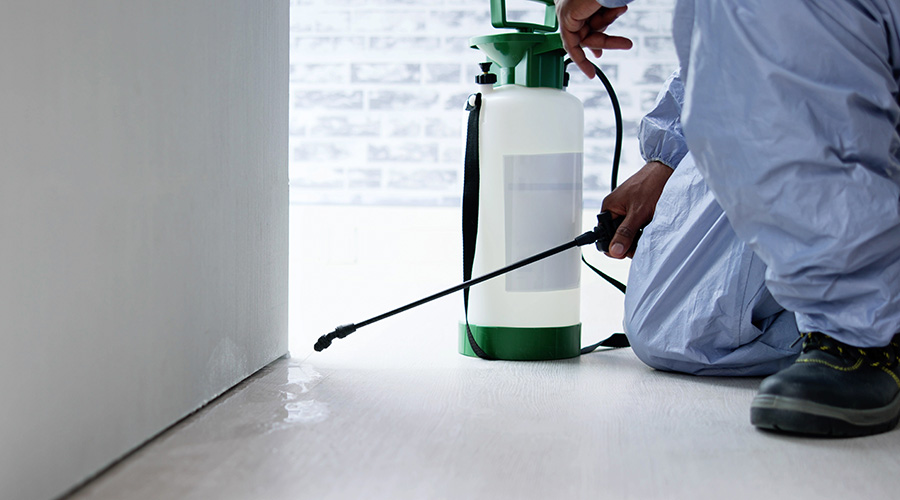How to Avoid Termite Infestations in Facilities

Addressing moisture and landscaping issues is key to preventing termites.
An effective pest management allows facility managers to root out all kinds of nuisances. A large swath of these pests are bugs, namely subterranean termites. These vermin come up from the ground, infiltrate cracks and crevices in a building, eat cellulose-containing structures and then retreat down below to build nests and mate.
“They’re very cryptic insects who have survived for millions of years,” says Michael Bentley, vice president, training and technical services at the National Pest Management Association (NPMA). “They survive by going undetected which really makes it difficult to know where they’re at and most importantly, where they’re causing the most damage in the structure.”
A good place to start with pest prevention is understanding what conditions make a building attractive to termites, Bentley says.
What attracts termites?
Moisture is a primary attractor for termites because they need it to stay hydrated and digest their food, such as wood, which is rich in cellulose. Wood also retains water if there’s too much moisture, making wet wood all the more enticing for termites to eat.
“Ensuring that there are no moisture issues in or around the facility, whether it starts from a leak in the roof or it’s a problem down in the foundation, is always going to be key,” says Bentley.
Leaks and foundational problems can be scouted out through routine inspections done by a pest management professional year-round. Attractors don’t end with moisture, though, as building and construction materials can also pose a risk factor.
“Even if you have a facility that is well constructed, solid concrete with no wood used in it or for building it, there’s still going to be plenty of viable cellulose food sources inside that facility,” says Bentley.
Termites like cellulose because it’s their main food source, and it can be found in many different materials. That includes wood, drywall, insulation and carpets, among other materials. It’s critical to prevent termites from entering a facility so they can’t eat these structures or materials, thus protecting all of it from potential damage.
The landscape surrounding a facility can also be an inviting factor for termites. Poorly maintained land can serve many functions for the pests, including being a food source, a hiding spot and a potential entry method.
Bentley recommends a “building out” strategy for landscaping because of this, meaning working from the immediate area outside of a facility outward.
That involves creating an 18-to-24-inch band of loose rock or gravel to surround the perimeter of the facility. This essentially borrows the Medieval concept of using a moat to protect a building from intruders, however, now using rocks instead of water.
“It’s kind of an anti-moat designed to create this dry, arid, uninviting barrier around the facility’s foundation that is less conducive to pass through,” he says.
Not only that, but it also creates a wide gap between the facility itself and the beginning of any greenery, keeping most of the vegetation away from the facility. It makes the gap useful as a buffer zone against termites.
Ultimately, understanding what attracts termites is a vital aspect of managing and preventing them, as a less inviting facility to them means fewer of these pests to deal with.
By Jeff Wardon, Jr., Assistant Editor
Jeff Wardon, Jr., is the assistant editor of the facilities market.
The post "How to Avoid Termite Infestations in Facilities" appeared first on FN Prime Maintenance & Operations

